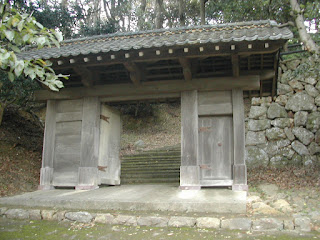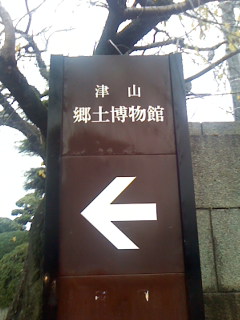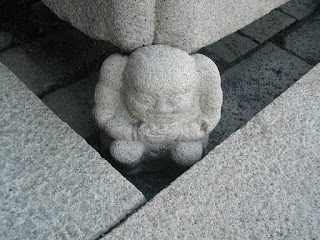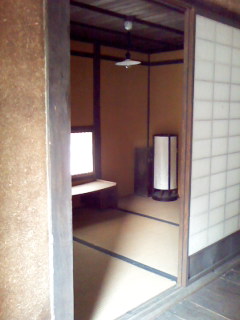Sunday, December 30, 2012
San Dimas Writer's Workshop Volume II
I love this book, and I appreciate all the people who have edited and published this book for us.
I remember someone asked me if I want a story included in it, and I said yes. Then I went away for a few months, and now it's been made. Thank you, Frank Koh for organizing the whole process! I wish my memoir will be published just like that, too!
You may not see it in this photo, but this is very pretty cover. The price is $25, and I think only about 20 more books are available. I bought two and went to my local market and handed to an employee to read my story. I told her she could route it among their employees because they contributed to my story. This is my way to thank them.
Thank you all the members at San Dimas Writer's Workshop for all these years to help me edit my stories and being so supportive. I must especially thank Dolores Cullen and Sandra Sheffer to put up with me all these years. Also, Frank Koh, the organizer wearing many hats and the mustache above, thank you very much.
My short story "Stuck" is the same story as it appears in the Bicycle Review, but it isn't the same. But I won't tell you what is the difference.
Love you all the people who have taken time to read my outrageous story!
A Happy New Year!
Keiko
Wednesday, December 19, 2012
The Total Pageviews of All Time
I do this once in a while. It's interesting. If anyone knows why "Names and Preference" has gone up to the highest in the list, please let me know. This is a bit of mystery to me.
Posts
| Entry | Pageviews |
|---|---|
Nov 11, 2009, 6 comments
|
809
|
Apr 20, 2010, 16 comments
|
247
|
Jul 4, 2010, 19 comments
|
190
|
Nov 22, 2009, 8 comments
|
126
|
Sep 25, 2011, 2 comments
|
113
|
Sunday, December 16, 2012
The Bicycle Review #19
My short story "Estimates" has appeared on The Bicycle Review #19.
Labels:
Estimates,
published,
short story,
The Bicycle Review
Tuesday, December 4, 2012
Vara-Dundubhi-Svara
On page 106 of the previous book by Professor
Ueki, I pointed out to him that "vara-dundubhi-svara (the most excellent
drum owner)" reminded me of American rocks. I was particularly thinking of the songs by Niel
Sedaka or Paul Anka in 60s. The backup singers’
chorus sounded like "dundubhi dowa dowa" or something. He said it was interesting. We talked
more about さ行 (sa, shi, su, se, so)of
Japanese letters.
I posted the above paragraph on FB and received
some comments. I guess my spelling of yabadabadoo
as goodbye threw some people off. It was
“Yabadava-du!” But I thought more
about it.
Then, I made a discovery! Vara and svara ended up in our word, subarashii
(すばらしい). Subarashii means splendid. It’s always something.
Well, folks.
Dundubhi-Yabadabadoo!
Labels:
connection,
Indo-European languages,
splendid,
subarashii,
svara,
vara,
yabadabadoo,
素晴らしい
Monday, December 3, 2012
Sad-dharma-pundarika sutra
On 法華経: Professor Ueki Masatoshi pointed out that Sad-dharma-pundarika sutra means "white-lotus-like-most-splendid-and-right-teaching 白蓮華のように最も素晴らしい正しい教え" and not "Right teaching white lotus 正しい教えの白蓮" which was translated by the most authoritative paperback and Tokyo University scholars by Iwanami publisher.
He elaborated the grammar and usages, analyzed and fixed the problems, and I agreed he was right about it. But what is our reality?
Most books, even the books I like and consider pretty good contain errors and often very serious kinds. That goes to both E to J, and J to E. And I'm talking about major books like Shakespeare translation and so on.
I know this post does not help you right away, but I just want you to be aware
.
Below is translated by Rosetta Savelli in Italian.
MoKeiko Amano
Il法華経: Professore Ueki Masatoshi ha sottolineato che Sad-dharma-pundarika sutra significa "bianco-loto-come-più o maggiore -splendido-e-diritto-insegnamento 白 蓮華 の よう に 最も 素晴らしい 正しい 教え" e non "Destra insegnamento loto bianco 正しい 教え の 白蓮 ", così come è stato tradotto dal vocabolario tascabile degli autorevoli studiosi dell'Università di Tokyo per editore Iwanami.
Esso ha a elaborato la grammatica e gli utilizzi, analizzato e risolto i problemi, ed ha accertato la propria ragione. Ma qual è la nostra realtà?
La maggior parte dei libri, anche i libri che mi piacciono, possono contenere degli errori, alcuni poco gravi, mentre altri molto gravi e di vario genere. Questo vale sia per E a J, e J per E. E sto parlando di libri importanti come la traduzione di Shakespeare.
So che questo non ti sarà di grande aiuto, ma ti aggiungerà consapevolezza.
Traduzione in Lingua Italiana di Rosetta Savelli
Sunday, November 25, 2012
The Ruins of the Hamada Castle
Above the stairs, this shrine appeared before my eyes.
Then I came to this gate. This was not the gate of the castle. Someone moved this old gate that used to belong to Tsuwano han. The sign explained that it was transferred to Hamada han. Tsuwano and Hamada han must have been like brothers, not only because of the fate of this gate, but some new information I gathered right before this trip, and luckily, I confirmed it during this trip.
Climbing up these steps was my good exercise. I opened and closed both my palms as I went up. Then I lifted my arms up like a jet plane and rotated my shoulders. I was pretty sure nobody was around.
I loved it although it was a bit cold.
How wonderful it was to reach the top!
This view was on my left.
This was on my right. It was unreal to me. Waves hit the frame of the bay throwing up white splash. The sign there said, in 1626, a Spanish missionary named Diego de S passed this spot. He reported he saw a fine castle. I'm sure the Hamada han's samurai were looking down with their curious eyes. I wonder if any of them went down and said hello.
I've never seen this flower before. I thought it could be from a foreign land.
The ground I walked on was soft, but it was windy. I wanted to stop at one more place, a local research center, if I needed to leave Hamada rather than staying one night. I received a call from the person in charge at the library. She said it would take a long time even if I showed her my family certificates. She probably has never processed this kind of request.
Probably I'll have a chance to step on the beautiful ground like above again. Nothing is in hurry for me. I'm just surprised at anything I've seen.
At the Hamada station, I found only one bakery where I had some sandwich, a sweet, and coffee. The bakery was a part of a hotel. I asked an assistant there if they had a vacancy. They were all booked except one smoking single room. No, thank you. I rather stay at a clean and reasonable business hotel free from cigarette smoke. I found one next to the Shin Yamaguchi station. Looking at these photos, I want to go back there again next year and travel further along Japan Sea.
Monday, November 19, 2012
Tsuyama Kyodo Museum
Two
Fridays ago, I visited the Tatebayashi Kyodo Shiryokan (local archives). It took almost all day to get there from Yokohama. In fact, it was 3:30 p.m. after I finished my
very late lunch. Then, it started raining. Not a good sign. So I was in a given-up mode. I thought I would go to the local shrine, take photos, and go home.
But I
had to pass the Shiryokan before I get to the shrine. To my good fortune, the Shiryokan had their
special exhibition about the Tatebayashi han and its territories, and it was
the last day. And it was the last hour,
too!
I
went in, browsed around skipping most of interesting displays like a dark blue
suit of armor with gold headdress like a pair of horns, and stopped at a large
ancient map. It was the han’s map around
the Tatebayashi castle.
Once
I’m lucky, more luck seems to come my way.
The displayed map made the cover design of their pamphlet. It was 700 yen. Sure enough, I found the name I was looking
for plus a few other names of relatives.
The original
map belongs to an individual who lives in Tsuyama, not Tatebayashi or Hamada. The Tatebayashi han (Ochi Matsudaira) moved to Hamada in 1836, and reestablished
themselves as the renewed Hamada han. Then they
moved one last time to Okayama after their defeat to Choshu han. Tsuyama is in Okayama.
I
also spotted one of the notebooks titled “The Status of the Hamada Han Members.” It said the total of 25 books came also from
Tsuyama, but how lucky I am, it came from Tsuyama Kyodo
Museum. I’m grateful to the donor to the museum.
Next
day, I headed to Hamada and Tsuwano instead of Tohoku and Hokkaido as I had
planned previously. But once at Hamada, I
was unsuccessful in getting touch with the person in charge of the original
documents of Hamada han.
After
I spent a day in Tsuwano, I headed to Okayama.
But the map for loan hadn’t returned, and the head of the museum told me that I
could take a look at it, but it would be only available after Friday morning which
was the scheduled arrival time and day.
“Thank
you. I will go home and come back on
Friday.”
So, I ended up making two visits to Tsuyama Kyodo Museum last week. To make this story short, I found what I was looking for. How did I feel when I saw his name? Bingo! That’s how I felt. Yamada Makinosuke is the only name my mother had told me, but I’m glad she did.
With
much appreciation to Tsuyama Kyodo Museum, I’m dedicating this blog to them,
and I also want to introduce their special exhibition on the picture maps of
the Tsuyama Han currently shown..
I
read an interesting article written by Kajimura Akiyoshi at the museum. He wrote that in 1835, the feudal government
sent their orders to all the hans throughout Japan to recreate new picture maps.
The government
handed the receivers a copy of the old maps and known updates, but in those
days, hans’ territories were complex because other hans owned some lands in
other hans’ territories, and the government also owned their lands here and
there throughout Japan.
What
a gigantic headache to the Tsuyama han to come up with a legitimate map! As I read the article, I thought of the
Hamada han, too. Their situation must
have been similar. Besides, the Hamada
han members then were just transferred from Tatebayashi to get away from on-going
natural disasters year after year plus their financial troubles. Boy, this order of a new map must have been
another headache, I’m sure.
Well,
I think we can’t get away from our headaches just like that. My mother disliked moving, and I wonder
because of this fact in the history. After
she married to my father, she never moved.
In fact, she despised any kind of moving including her traditional-arts utensils
in her house. She said the people
constantly moving tend to be poor. I think
there is an element of truth to it. I've been moving back and forth between Japan and the U.S., and I don't want to count.
I had again late lunch, and the restaurant was, again my luck, next to the museum. Three colored lunch is my favorite. It was delicious!
Sunday, November 18, 2012
Nishi Honganji in Kyoto
This is Nishi Honganji close to Higashi Honganji. They are not under renovation.
Leaves are turning golden yellow, and luckily, they are showing prized chrysanthemums.
It must be heavy, but he does not complain.
This is the most ornamental drainpipe pipe I've ever seen. I'd like to install it and turn it into a hot bath.
I feel relaxed just being at a temple.
What a beautiful music it was to listen to the man sweeping with a bamboo bloom! I'm sure he was in a Zen meditating state. I can still hear the sound looking at the photo.
Friday, November 16, 2012
Higashi Honganji, Kyoto
This trip wasn't a part of my plan, but I want to go back to Okayama tomorrow. So, today, I spent some time at Higashi and Nishi Honganji. These photos are all from Higashi Honganji. Although the temple was reconstructed during the Meiji era, it was originally created by the daughter of Shinran. She had to be a powerful woman. I hope all readers have a chance to read Shinran's Tannisho including my children.

In front of the temple.
Dragon water fall.
927 tatami mats!
Two large buildings were under repair. The sign said it would take until 2015.
I also went to see Nishi Hongangi because it's very close to this temple.
Wednesday, November 14, 2012
Tsuwano, Little Kyoto
Tsuwano is just the way I've always imagined. It's beautiful.
This is the main street about 10 minute-walk away from Tsuwano Station.
It rained on and off, and we even had hail.
Mori Ohgai's house where he lived growing up. He went to Tokyo with his father when he was ten. The father was one of the doctors worked for the lord of Tsuwano Han. Red colored tile roofs are a representative of Tsuwano's products.
The house is similar to the house I was growing up. As you see it, in summertime, we leave all doors open as the photo.
From Mori Ohgai's house, I crossed a bridge to get to Nishi Amane's house.
I talked about these incredibly over achievers before, and Wikipedia is available. Tsuwano Han was relatively small han, but it contributed highly to the change of the government from feudal to modern.
This is the front of Mori Ohgai's house. The square table is to be used during winter covered with a thick futon and a stove underneath.
I was a bit afraid to walk across this bridge, but I wanted to see Nishi Amane's house.
This is Nishi Amane's house.
This is the storage house in the compound.
The front of the house. It isn't much different from the house I grew up.
This is the three-tatami-mat room in the storage house where Nishi studied.
The back of the house.
This is the kitchen area.
What I love about Tsuwano is that small streams run through the city.
I heard the sound of water everywhere as I walked. I'd like to listen to it all day.
Some houses are surrounded by streams like below. Water is clear.
I wanted to buy mikan (mandarin oranges), but I couldn't because of the weight.
Too bad. Compared to the price in Yokohama, this is very inexpensive.
I was very impressed with this notice. The owner of this shop apologizes of closing the business
and says thank-you to all the customers for their long-time patronage. The construction of the sentences simple and right to the point, and the brushstrokes are also the same.
This sincerity is not easy to achieve in my opinion.
Nishiki Koi. When we say it, we pronounce Nishiki Goi.
Why? Because it's easier for our tongue.
This is the Catholic Church with long history.
My express train was three minutes late. Because of it, both trains on this platform arrived at the same time. But I couldn't capture the moment for obvious reason: they came from opposite direction. But I hope I captured my excitement!
Subscribe to:
Posts (Atom)

































































.jpg)
